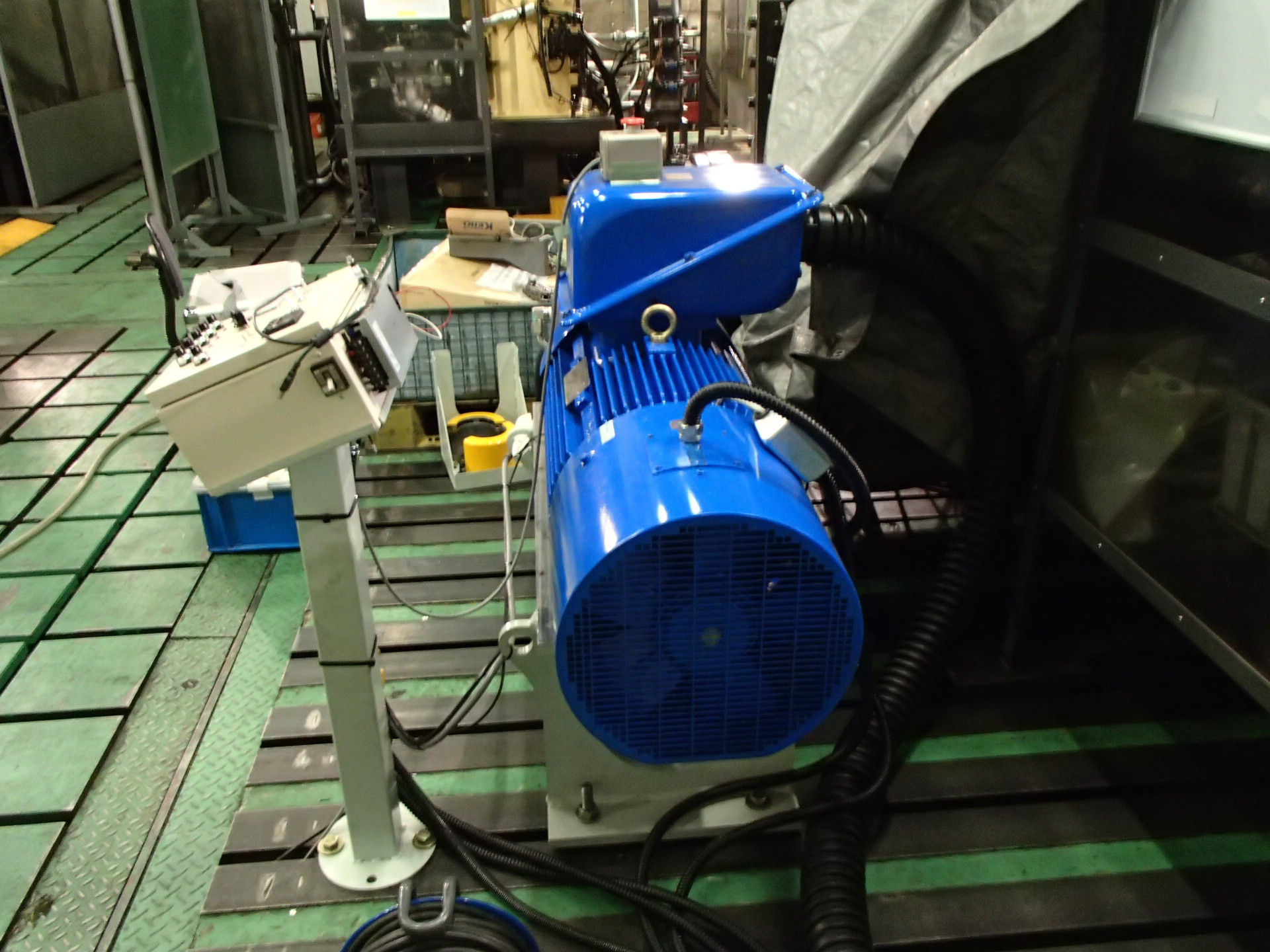Efficiently Using Waste Heat Emitted during Product Development by Converting it to Energy
Hitachi Construction Machinery, as a part of its activities to prevent global warming throughout its product lifecycle, is utilizing a device developed in-house to efficiently utilize waste heat by converting it into energy.
During development testing, we implement engine pump durability testing to assess the reliability of our engines and hydraulic equipment. The frequency of bench testing to verify engine performance is increasing to satisfy exhaust gas regulations in various countries. Previously, the thermal energy emitted during durability testing was exhausted as waste heat. To eliminate this energy waste, we developed a power recovery device that converts waste heat into electricity through efficient recovery and utilization. This device recovers in the form of electricity the equivalent to 30% of an engine’s output. This electricity is then used to power production at our plants. Putting this in a different perspective, the waste heat emitted during one durability test is equivalent to the amount of CO2 absorbed by around 3,700 cedars a year. Consequently, we are contributing to the reduction of CO2 emissions.
As we move forward, we aim to continue to improve our efficiency of energy usage by improving the device’s energy recovery rate and adapting it for use in other fields.


